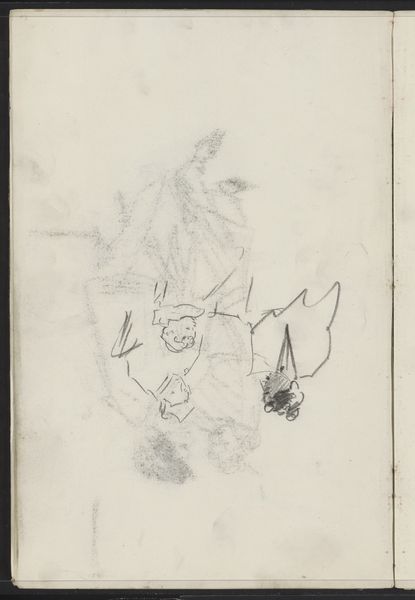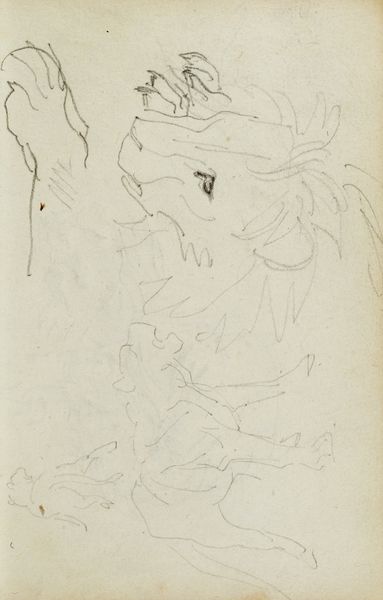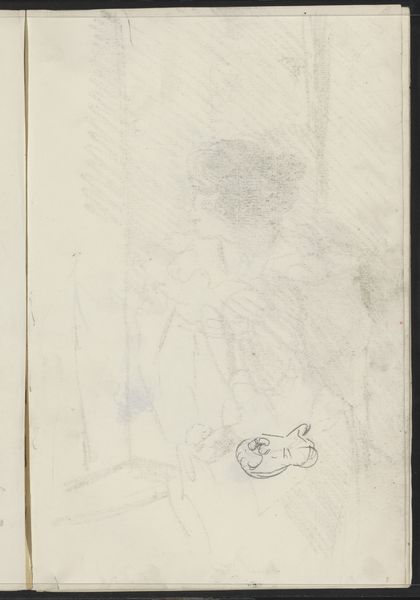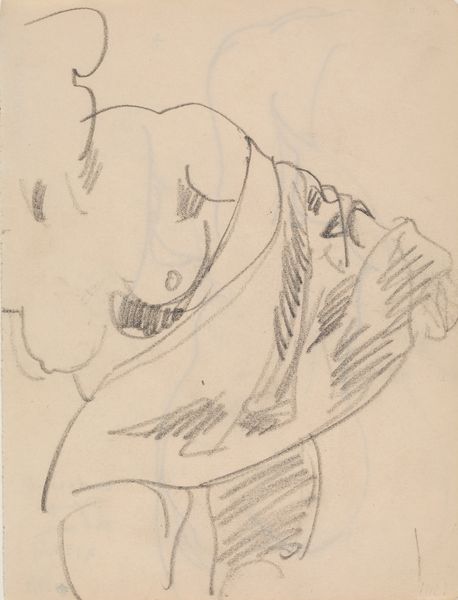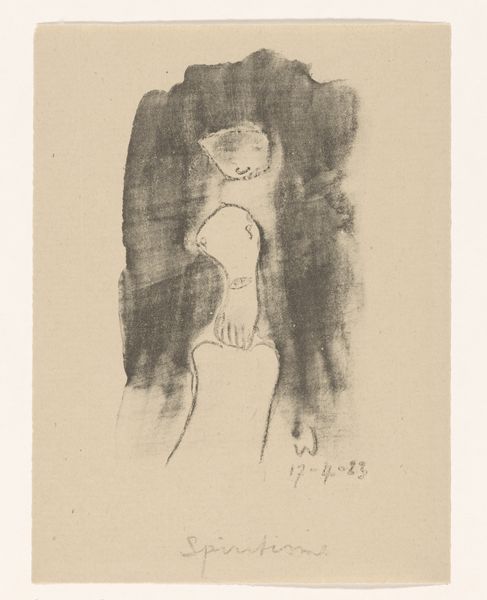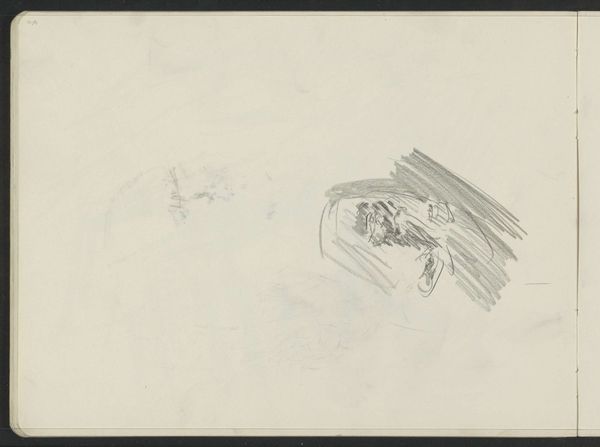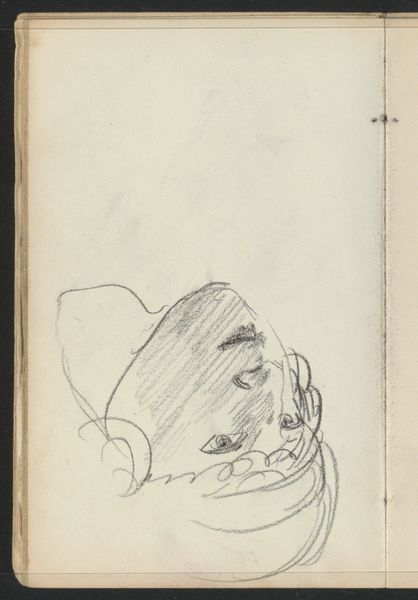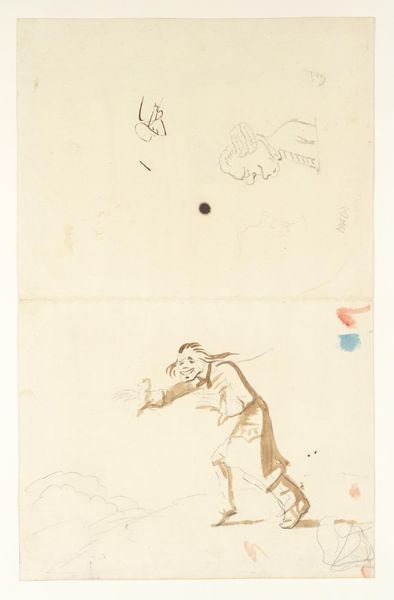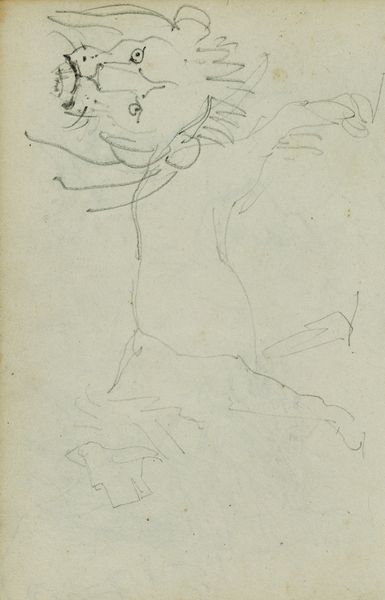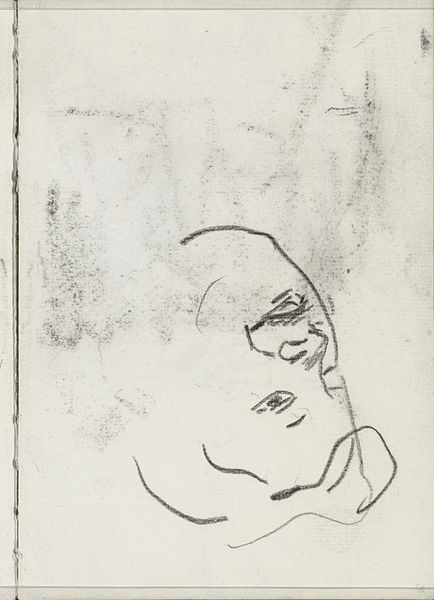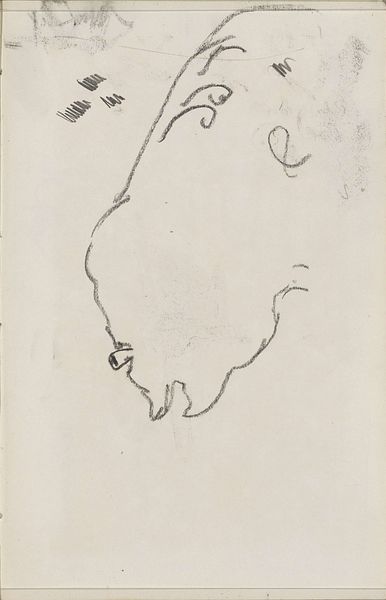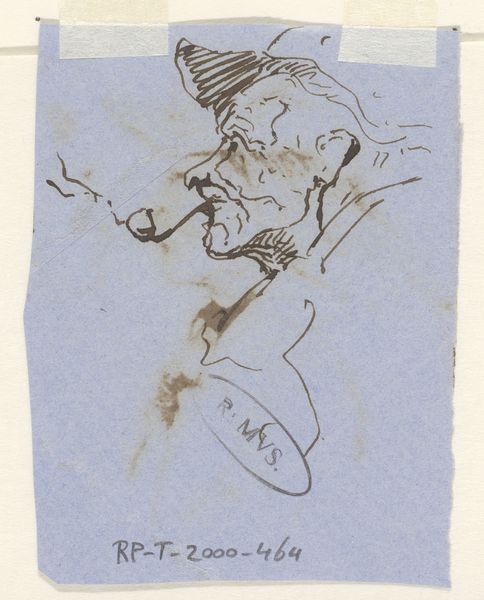
drawing, print, ink, graphite
#
portrait
#
drawing
#
ink drawing
# print
#
ink
#
graphite
Dimensions: sheet: 15 7/16 x 12 7/16 in. (39.2 x 31.6 cm) image: 11 5/8 x 9 1/16 in. (29.5 x 23 cm)
Copyright: Public Domain
Curator: Henri de Toulouse-Lautrec rendered this delicate portrait, entitled "Coquelin Aîné", in 1898, using graphite and ink. The artwork resides here at the Metropolitan Museum of Art. Editor: My initial impression is one of fragility. The sparse lines create an almost ghost-like image. There’s a wistful quality, despite the subject’s seemingly stern expression. Curator: That's a keen observation. Lautrec had a knack for capturing the essence of his subjects with remarkable economy. He frequented the theater, and Coquelin Aîné, was, of course, a very famous actor. These ink drawings and prints gave Lautrec the perfect medium for capturing that theatrical world. Editor: Indeed. Consider the performative aspect inherent in portraiture itself. We see a figure—presumably captured in a candid moment, yet acutely aware of being observed. The sketch highlights this inherent tension of presenting identity. And this exaggerated hat… a visual cue linked with character or costume? Curator: Well, Lautrec was deeply engaged in the Parisian society and counter-culture of the time. These were figures aware of the public gaze, and that awareness inevitably informed the imagery of the era. Also, the fact that the drawing is printed surely speaks to the dissemination of the image. Editor: Absolutely. The context of the print elevates it beyond a mere study; it speaks volumes about mass production and popular image-making in the late 19th century. It begs the question, what did it mean to reproduce, circulate, and consume images of prominent figures at that moment? Curator: It raises crucial points about the increasing celebrity culture then forming. It gives the viewer a different access point than other established art forms. Editor: I think in this context the seeming “incompleteness” of the work is quite telling as well. There is something left undone. A sense of performance is revealed, or hinted at… that’s very compelling. Curator: Lautrec was a master of suggestion, of hinting at complex narratives. And I agree—the lack of full resolution becomes an asset. It allows the viewer to become a participant, to fill in the blanks. Editor: Precisely. That is the crux of this image. It serves as a reminder of how cultural forces imprint on both the artwork itself, and the subject it portrays. Curator: A truly revealing encounter, both with Lautrec’s artistry and the era it captured.
Comments
No comments
Be the first to comment and join the conversation on the ultimate creative platform.
